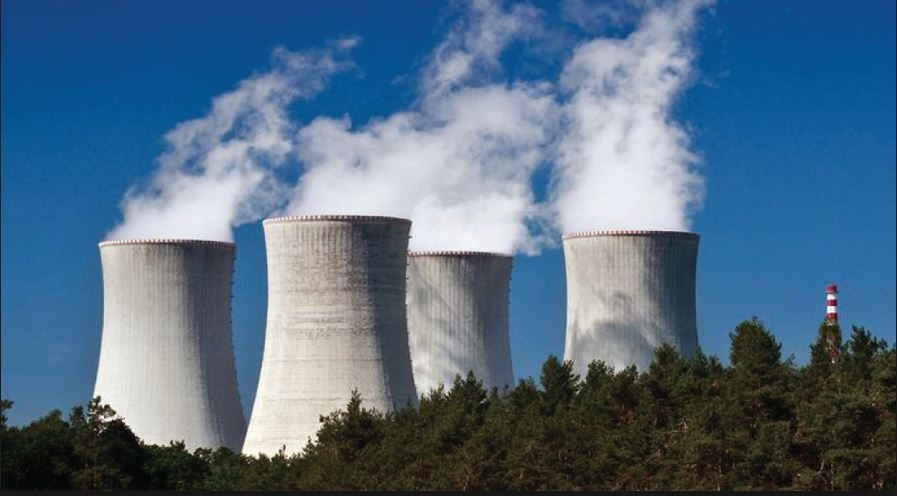The Energy Department joined with Texas Tech
University and the department's Sandia National Laboratories on July 17
to break ground on a new state-of-the-art wind turbine test facility in
Lubbock, Texas. Supported by a $2.6 million investment from the
department's Office of Energy Efficiency and Renewable Energy, the
Scaled Wind Farm Technology (SWIFT) facility will be the first public
facility of its kind to use multiple wind turbines to measure how wind
turbine wakes interact with one another in a wind farm. Scheduled to
begin operation later this year, the facility will help wind turbine
designers and manufacturers continue to drive down the cost of wind
energy by reducing the aerodynamic losses of wind energy plants,
enhancing energy capture, and mitigating turbine damage.
Along with the ability to monitor wind plant
performance, the SWIFT facility will have additional advanced testing
and monitoring capabilities, as well as space for up to ten wind
turbines, allowing researchers to examine how larger wind farms can
become more productive and collaborative. The facility, which will host
both open-source and proprietary research, is the result of a
partnership between the department's Sandia National Laboratories, the
Texas Tech University Wind Science and Engineering Research Center,
Group NIRE, and wind turbine manufacturer Vestas. The site will
initially be equipped with two research-scale wind turbines provided by
the Energy Department and a third installed by Vestas Technology R&D
in Houston. See the DOE
Progress Alert and the
Wind Program website.
The Energy Department is developing new
voluntary procedures that will help standardize how state and local
governments, industry, and energy efficiency organizations estimate
energy savings. These protocols are being developed by technical experts
through collaboration with energy efficiency program administrators,
industry stakeholders, and home energy assessors. The department invites
stakeholders from the public sector, industry, and academia to
participate in an online public review of these new protocols in an
effort to estimate energy savings from energy efficiency programs.
The new procedures provide a straightforward
method for evaluating potential energy savings in residential and
commercial building upgrades offered through ratepayer-funded
initiatives. These common energy efficiency upgrades include
energy-saving lighting, lighting controls, commercial air conditioning,
and residential furnaces and boilers. These voluntary protocols will
help energy efficiency program administrators and local governments
improve the objectivity, consistency, and transparency of energy savings
data; it will also help strengthen consumers' confidence in the results
expected from energy efficiency upgrades. The protocols, being
developed under the Uniform Methods Project, are available for review
through July 27. See the DOE
Progress Alert and the
protocols for review.
 |

A refuse truck powered by compressed natural gas in Washington state.
Credit: Western Washington Clean Cities
|
The Energy Department on July 12 announced $30
million in funding for 13 research projects designed to find new ways of
harnessing natural gas supplies for cars and trucks. Researchers in
California, Colorado, Connecticut, Illinois, Michigan, New York, Texas,
Washington, and Wisconsin will work on the initiative. The grants are
made through the Energy Department's Advanced Research Projects Agency –
Energy (ARPA-E). The projects are part of Methane Opportunities for
Vehicular Energy, which aims to engineer lightweight, affordable natural
gas tanks for vehicles and develop natural gas compressors that
efficiently fuel a natural gas vehicle at home.
Today's natural gas vehicle technologies require
tanks that can withstand high pressures. They are often cumbersome, and
are either too large or too expensive to be suitable for smaller
passenger vehicles. ARPA-E's new projects are focused on removing these
barriers, which will help encourage the widespread use of natural gas
cars and trucks. For example, REL, Inc. in Calumet, Michigan, will
receive $3 million to develop an internal "foam core" for natural gas
tanks that allows tanks to be formed into any shape. This will enable
higher storage capacity than current carbon fiber tanks at one-third the
cost.
The projects will also focus on developing
natural gas compressors that make it easier for consumers to re-fuel at
home. The Center for Electromechanics at the University of Texas at
Austin will use $4 million to develop an at-home natural gas re-fueling
system that compresses gas with a single piston. Unlike current
four-piston compressors, these highly integrated single-piston systems
will use fewer moving parts, leading to a more reliable, lighter, and
cost-effective compressor. See the
Energy Department press release and the
complete list of projects 
.
special thanks to
U.S. Department of Energy |
USA.gov
The U.S. Department of Agriculture (USDA)
announced on July 12 that rural electric cooperatives and utilities in
15 states will receive $287 million in loan guarantees to make
improvements to generation and transmission facilities and to implement
smart grid technologies. The announcement includes support for more than
$10 million in smart grid technologies. This will help utilities make
efficiency improvements to the electric grid and help consumers lower
their electric bills by reducing energy use in homes and businesses.
With this funding, USDA Rural Development moves closer to reaching a
department goal to fund more than $250 million for smart grid
technologies.
In Texas, Houston County Electric Cooperative is
receiving $9 million to build and improve 421 miles of distribution
line and make other system improvements, serving 2,000 customers. The
loan includes $670,000 in smart grid projects. The loan guarantees are
provided by USDA Rural Development's Rural Utilities Service. The
funding helps electric utilities upgrade, expand, maintain, and replace
electric infrastructure. USDA Rural Development also funds energy
conservation and renewable energy projects. See the
USDA press release.
Global clean energy investments increased 24% in
the second quarter of 2012 compared to the first quarter, with new
investment totaling $59.6 billion, according to Bloomberg New Energy
Finance. The amount was still 18% below the near-record quarterly figure
of $72.5 billion in the second quarter last year.
The United States enjoyed solid gains in
investment in the second quarter of 18% over the first quarter, reaching
$10.2 billion, the report said. China surged 92% in investment to $18.3
billion in the April-to-June period. Overall, solar accounted for $33.6
billion of investment in the second quarter, up 19% over the first
quarter, and wind had $21.6 billion, up 47% quarter to quarter. The
largest venture capital and private equity deals of the quarter saw U.S.
automaker Fisker clinch $148 million for its plug-in hybrid vehicle
development. The figures draw on a comprehensive database of
transactions in clean energy worldwide. See the
Bloomberg New Energy Finance press release.
The California Energy Commission on July 11
awarded $1.1 million for energy research projects, including a variety
impacting renewable energy and energy efficiency. Funds for the 10
projects come from the Commission's Public Interest Research Project
program. Commissioners approved $300,000 to the Scripps Institution of
Oceanography at the University of California at San Diego in order to
better understand differences in regional climate model projections for
California and how they impact hydropower generation forecasting.
The remaining nine projects are from PIER's
Energy Innovations Small Grant program. The program provides money to
small businesses, non-profits, individuals, and academic institutions to
conduct research establishing the feasibility of new, innovative energy
concepts. These grants are capped at $95,000. Among the projects is a
project dealing with small soluble organic molecules designed to
increase the lifetime and reliability of photovoltaics, and a study of
enhanced cooling towers for cooling buildings. See the
California Energy Commission press release.










